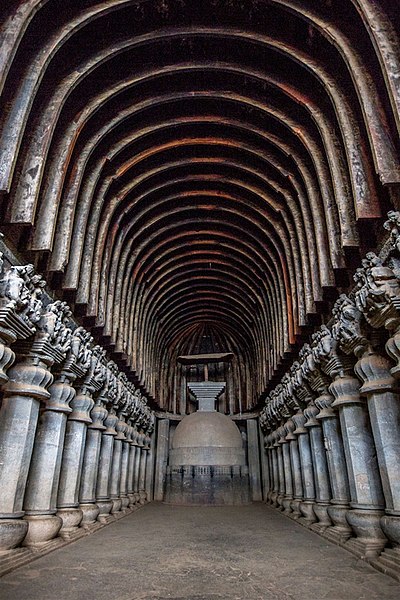The Karla Caves, Karli Caves, Karle Caves or Karla Cells, are a complex of ancient Buddhist Indian rock-cut caves at Karli near Lonavala, Maharashtra. It is just 10.9 Kilometers away from Lonavala. Other caves in the area are Bhaja Caves, Patan Buddhist Cave, Bedse Caves and Nasik Caves.
The shrines were developed over the period – from the 2nd century BCE to the 5th century CE. The oldest of the cave shrines is believed to date back to 160 BCE, having arisen near a major ancient trade route, running eastward from the Arabian Sea into the Deccan.
The Great Chaitya in the Karla Caves, Maharashtra, built in 50-70 CE
Path to the Karla Caves.
The Great Chaitya, partially obscured from view, in the 19th century.
Entrance of the Great Chaitya Cave at Karli
Indian rock-cut architecture
Indian rock-cut architecture is more various and found in greater abundance in that country than any other form of rock-cut architecture around the world. Rock-cut architecture is the practice of creating a structure by carving it out of solid natural rock. Rock that is not part of the structure is removed until the only rock left makes up the architectural elements of the excavated interior. Indian rock-cut architecture is mostly religious in nature.
Cave 19, Ajanta, a 5th-century chaitya hall
Kailash Temple, Ellora cave 16
Saptaparni Cave, a retreat of the Buddha.
The famous carved door of Lomas Rishi, one of the Barabar Caves, dated to approximately 250 BCE, displaying the first known Maurya reliefs.








